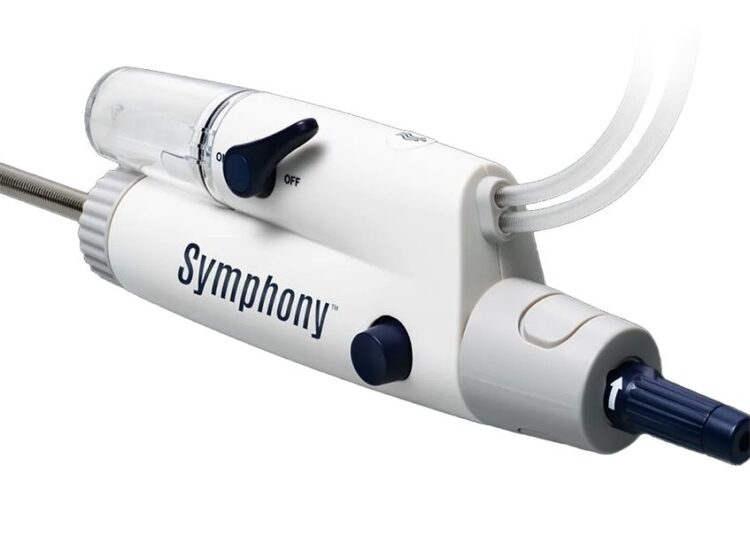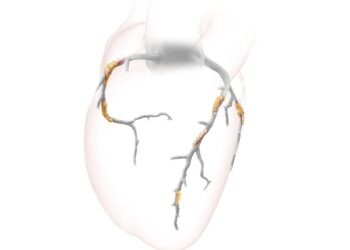# The Symphony of Data: AI’s Unseen Role in Tackling Pulmonary Embolism
The medical device community is buzzing this week with impressive late-breaking data from the SYMPHONY-PE trial, presented at the PERT Consortium 2025 Symposium. Imperative Care’s Symphony thrombectomy system demonstrated significant clot-burden reduction in intermediate-risk pulmonary embolism (PE) patients, coupled with a stellar safety profile showing no device-related serious adverse events.
As an AI technologist, I see headlines like this and my mind immediately goes beyond the mechanics of the device itself. While the engineering of a novel catheter is a feat of material science and fluid dynamics, the true paradigm shift lies not in the hardware, but in the potential for an intelligent software layer to transform the procedure. The study, concurrently published in *Circulation: Cardiovascular Interventions*, highlights a successful mechanical intervention. I believe it also sets the stage for the next leap forward: AI-augmented, precision-guided thrombectomy.
### From Mechanical Precision to Algorithmic Intelligence
The Symphony system is described as a “Next-Generation Precision Aspiration Thrombectomy System.” For now, “precision” refers to the mechanical design—the way the catheter engages the clot and the controlled manner of aspiration. This is a critical foundation. However, the future of precision in interventional medicine is algorithmic.
Imagine a system that doesn’t just rely on the physician’s interpretation of a 2D fluoroscopic image. Consider a catheter tipped with sensors feeding real-time data back to a control unit.
* **Haptic & Pressure Feedback:** An AI model could analyze micro-changes in pressure to differentiate between the soft, yielding texture of a blood clot and the firm, delicate wall of the pulmonary artery. This could enable the system to automatically modulate aspiration force, maximizing clot removal while virtually eliminating the risk of vessel damage. The physician moves from being the sole driver to a skilled supervisor of an intelligent tool.
* **Imaging & Computer Vision:** Real-time computer vision algorithms could analyze angiograms or intracardiac echo, segmenting the clot and vessel, and providing the physician with an augmented reality overlay. This “GPS” for the vasculature would highlight optimal positioning and warn of potential hazards, turning a high-stakes art into a data-driven science.
* **Predictive Modeling:** The true power of AI is unlocked with data. The SYMPHONY-PE trial itself created an invaluable dataset. By training models on pre-procedure CT scans, procedural data, and patient outcomes, we can build systems that predict procedural difficulty, suggest the optimal catheter size and approach, and even forecast the likelihood of residual clot. Each procedure makes the system smarter for the next.
### The Competitive Edge in an Evolving Market
The summary notes that other companies have a head start in the PE thrombectomy space. In a traditional hardware-centric view, catching up would mean a long, expensive cycle of incremental mechanical improvements.
This is where the AI-platform approach becomes a powerful strategic differentiator. While competitors may have a lead in market penetration, a company that builds its device as an *intelligent platform* can leapfrog the competition. The next battleground isn’t just about which device is slightly more effective at clot removal in a controlled trial; it’s about which system can consistently deliver the best outcomes, reduce procedure times, and lower cognitive load on physicians in the chaotic environment of a real-world cath lab. A device that learns, guides, and automates will be the ultimate winner.
Imperative Care has an opportunity here. By architecting the Symphony system not just as a tool but as a data-acquisition and AI-delivery platform, they can create a defensible moat that is far harder to replicate than a purely mechanical design.
### Conclusion: The Conductor of the Orchestra
The SYMPHONY-PE results are a significant achievement in interventional medicine. The device is safe and effective. But the name “Symphony” itself is a perfect metaphor for the future. A symphony requires not just excellent instruments but a conductor to orchestrate them into a cohesive, powerful whole.
In the future of thrombectomy, the catheter, the aspiration pump, and the imaging system are the instruments. Artificial intelligence will be the conductor. It will listen to the data, guide the performance, and ensure every procedure achieves a pitch-perfect outcome. The success of the Symphony system is an excellent first movement; I’m eager to see how AI will compose the rest of the piece.
This post is based on the original article at https://www.bioworld.com/articles/724123-imperatives-symphony-plays-well-for-clot-removal-still-not-first-chair.






















